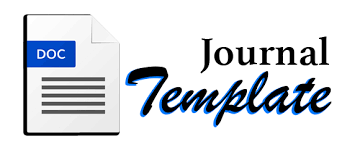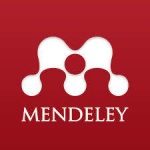MEMBANGUN ILMUWAN CILIK MELALUI INTEGRASI PEMBELAJARAN I-METALS (ISLAMIC - MATHEMATICS, ENVIRONENT, TECHNOLOGY, ART, LITERACY, AND SCIENCE) DI RAUDHATUL ATHFAL KECAMATAN BADEGAN, PONOROGO
DOI:
https://doi.org/10.21154/inej.v2i2.3556Keywords:
Pendidikan, Usia dini, I-METALSAbstract
Pendidikan Anak Usia Dini pada era modern saat ini mengalami perkembangan yang belum sesuai dengan harapan. Hal ini dipengaruhi oleh belum meratanya kualitas pendidikan usia dini di kota dan di daerah. Globalisasi dan adanya pandemi Covid 19 membuat semua pegiat pendidikan harus menyesuaikan dengan teknologi. Yang menjadi masalah adalah para guru di daerah belum memiliki akses yang luas untuk mengembangkan kompetensi mereka. Tujuan dari pengabdian ini adalah untuk memberikan pelatihan kepada guru terkait pembelajaran integrasi IMETALS. Adapun metode dalam pengabdian ini menggunakan pendekatan ABCD dimana peneliti menangkap adanya potensi pendidikan di lokasi pengabdian. Hasil dari pengabdian ini, yaitu hasil angket respon menunjukan peserta sangat puas dengan adanya pelatihan ini. Guru mengatakan bahwa penelitian ini sangat menarik. Sebelumnya pada guru belum tau konsep pembelajaran integrasi IMETALS. Guru menunjukan antusiasme yang tinggi dengan berperan aktif pada saat kegiatan. Dalam hal kebermanfaatan, peserta juga menganggap bahwa pelatihan ini sangat bermanfaat dan akan mencoba menerapkan pada saat mengajar di sekolah
References
Andriyani, Daniar Fatma, and Julianto Julianto. “Kemampuan Guru Dalam Mengenalkan Konsep Pengukuran Pada Anak Kelompok B Di Ra (Raudhatul Athfal) Al Fithrah Surabaya.” PAUD Teratai 4, no. 2 (2015).
Hakim, Lukman, and Melisa Yulianasari. “Penerapan Strategi Talking Stick Dengan Media Kartu Berwarna Untuk Meningkatkan Aktivitas Dan Hasil Belajar Aksara Jawa Kelas V SD Muhammadiyah 3 Ponorogo.” Piwulang: Jurnal Pendidikan Bahasa Jawa 9, no. 1 (2021): 1”“12.
Imaduddin, Muhamad. “Mendesain Ulang Pembelajaran Sains Anak Usia Dini Yang Konstuktif Melalui Steam Project-Based Learning Yang Bernuansa Islami.” In Proceedings of Annual Conference for Muslim Scholars, 950”“58, 2017.
“KI, KD, Indikator Kurikulum 2013 PAUD (1) (2).Pdf,” n.d.
Margorini, Sri, and Ratu Yustika Rini. “Penerapan Pembelajaran Berbasis Sains, Teknologi, Teknik dan Matematika (STEM) Pada Anak Usia Dini: Kajian Literatur Terhadap Pandangan Abad 21.” In Prosiding Seminar Nasional Pendidikan FKIP, 2:96”“105, 2019.
Sadiah, N. Halimatu, and Ririn Hunafa Lestari. “Upaya Meningkatkan Pengetahuan Sains Pada Anak Usia Dini Melalui Pembelajaran STEAM.” CERIA (Cerdas Energik Responsif Inovatif Adaptif) 3, no. 3 (2020): 237”“44.
Santika, Desi Arianti, Edi Hendri Mulyana, and Lutfi Nur. “Pengembangan Media Pembelajaran Model STEM Pada Konsep Terapung Melayang Tenggelam Untuk Memfasilitasi Keterampilan Saintifik Anak Usia Dini.” Jurnal Paud Agapedia 4, no. 1 (2020): 171”“84.
Siron, Yubaedi, Ayu Iis Nuryanah, Huri Huraerah, and Nisa Fadhliyah Rahmani. “Wajah TK Berbasis Islam: Kesiapan Guru Dalam Menerapkan Pembelajaran STEM.” Al-Hikmah: Indonesian Journal of Early Childhood Islamic Education 4, no. 2 (2020): 171”“92.
Zaim, Muhammad. “Tujuan Pendidikan Islam Perspektif Al-Quran Dan Hadis (Isu Pengembangan Pendidikan Islam).” Jurnal Muslim Heritage 4, no. 1 (Desember): 251.
Downloads
Published
Issue
Section
License
Please find the rights and licenses in InEJ. By submitting the article/manuscript of the article, the author(s) agree with this policy. No specific document sign-off is required.1. License
The non-commercial use of the article will be governed by the Creative Commons Attribution license as currently displayed on Creative Commons Attribution-NonCommercial-ShareAlike 4.0 International License.
2. Author(s)' Warranties
The author warrants that the article is original, written by stated author(s), has not been published before, contains no unlawful statements, does not infringe the rights of others, is subject to copyright that is vested exclusively in the author and free of any third party rights, and that any necessary written permissions to quote from other sources have been obtained by the author(s).
3. User/Public Rights
The spirit of InEJ is to disseminate articles published are as free as possible. Under the Creative Commons license, InEJ permits users to copy, distribute, display, and perform the work for non-commercial purposes only. Users will also need to attribute authors and InEJ on distributing works in the journal and other media of publications. Unless otherwise stated, the authors are public entities as soon as their articles got published.
4. Rights of Authors
Authors retain all their rights to the published works, such as (but not limited to) the following rights;
Copyright and other proprietary rights relating to the article, such as patent rights,
The right to use the substance of the article in own future works, including lectures and books,
The right to reproduce the article for own purposes,
The right to self-archive the article,
The right to enter into separate, additional contractual arrangements for the non-exclusive distribution of the article's published version (e.g., post it to an institutional repository or publish it in a book), with an acknowledgment of its initial publication in this journal (InEJ: Indonesian Engagement Journal).
5. Co-Authorship
If the article was jointly prepared by more than one author, any authors submitting the manuscript warrants that he/she has been authorized by all co-authors to be agreed on this copyright and license notice (agreement) on their behalf, and agrees to inform his/her co-authors of the terms of this policy. InEJ will not be held liable for anything that may arise due to the author(s) internal dispute. InEJ will only communicate with the corresponding author.
6. Royalties
Being an open accessed journal and disseminating articles for free under the Creative Commons license term mentioned, author(s) aware that InEJ entitles the author(s) to no royalties or other fees.
7. Miscellaneous
InEJ will publish the article (or have it published) in the journal if the article’s editorial process is successfully completed. The editors of Journal may modify the article to a style of punctuation, spelling, capitalization, referencing and usage that deems appropriate. The author acknowledges that the article may be published so that it will be publicly accessible and such access will be free of charge for the readers as mentioned in point 3.




